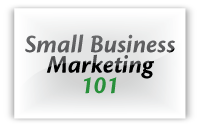You Don’t Have to be Telepathic to Know Your Customer

What’s the most important thing to do when you’re trying to get new customers?
Know precisely who those customers are and what they want.
Imagine you just finished months of work on a TV ad that’s promoting your brand new IT services. The day after the campaign launches, you’re glued to the telephones - waiting for the callers to start pouring in. Finally, the phone rings, it’s your marketing guy. He’s terribly sorry, and he doesn’t know how it happened: the ad for your IT consulting was run during the morning kiddie programming.
This might seem like an extreme example, but this type of marketing tragedy happens every day. Read on for some tips that will get you into your customer’s shoes, and make sure that your marketing will be effective.
It all starts with knowing who you’re talking to.
If you don’t know who your target customer is, chances are your marketing isn’t reaching its maximum potential. To be very successful, you need to evoke emotions and somehow move the people you are targeting. You should aim to know exactly who you’re speaking to if you really want get onto their level and use imagery and copy that means something to them.
Also, by knowing your customer, you can learn more about what they want. If you can tailor your product or service to meet those desires, then chances are you have a winner. One of my favorite bloggers, Brian Clark of Copyblogger, says it best:
while differentiating your offer from what others are providing is the goal, it’s no longer the starting point… you are seeking an audience before you seek the sale, and frankly, starting with the needs of the audience is essential to all forms of modern marketing.
The better you can pinpoint your audience, the more likely it is you’ll be successful in selling your product to them.
Now, some quick and effective ways to figure out what your customers really want:
- Talk to them!
Understanding what your customers desire begins with asking questions. Ask them what they like and dislike about your product or service. Ask if there’s one thing you could do better. If you’re really advanced, you could use a comments box (put it in a convenient location with simple forms and a pen; the idea is to encourage feedback). You could also ask for comments on your company blog (if you have one, if not you can always start now).
- Use your imagination
Talking with your target customers can only take you so far; a lot of the time they might not even know what they want or need from you. That’s when your imagination comes in to play. Try this: sit down somewhere quiet and close your eyes, now imagine a day in the life of your customer. Starting from waking up in the morning, picture everything they do. Michel Fortin explains this in even more detail in his post on targeting. If you really get into it, I’ll bet you come out with some new insight about what your customers want.
- Use some logic and reasoning
After you work on your empathy in the above exercise, you should attempt logic and reasoning. The emotion and logic go hand-in-hand, and if you use both to get closer to your customer you’ll be well ahead of the crowd. The trick to reasoning out what your customers want is to indiscriminately brainstorm a huge list of things, and then cut it down later. Try this with a few people and several different categories. The point of this is to come away with several core ideas about how your customers benefit from your product/service.
- Immerse yourself in a broad group of potential customers
You want to find places with a huge variety of potential customers, like forums or blogs, and then read everything they have to say. A lot of companies (and industries) have message boards that you can go to directly. These people won’t even be vague; they’ll come right out and say exactly what’s great and what’s not. You can learn a lot from them.
- Take a peak at your competition
In the next article of this series we’ll be looking at competitors in-depth. For this, however, I recommend simply looking at what products they have that are doing well. If you can talk to some of their customers (or find message boards, as mentioned in #4) you can get even more information about what people like and dislike in your market.
- What are your customers searching for? (literally)
Google has several keyword research tools that you can use at will. By learning which terms your customers search for the most, you can gain even more insight into their inner workings. (Stay tuned in the next few weeks for an article all about this and other free market research methods.)
Avoid a marketing tragedy and just do the research. By knowing who your customer is and what they want, you’ll be firmly on the road to growing your small business.
If you don’t have the time yourself, or aren’t interested in doing the work, take a look at Step 1 of the SmallFuel Marketing System. We’ll do everything for you. Also, if you enjoyed the article, you should subscribe now. It’s free.





Reader Comments
Does anyone have any stories about how market positioning helped your company?
A lot of small business owners love to skip the research, it would be great to hear from some of you who’ve benefited from it.
A lot of small business owners love to skip the research, it would be great to hear from some of you who’ve benefited from it.
Add Your Comment